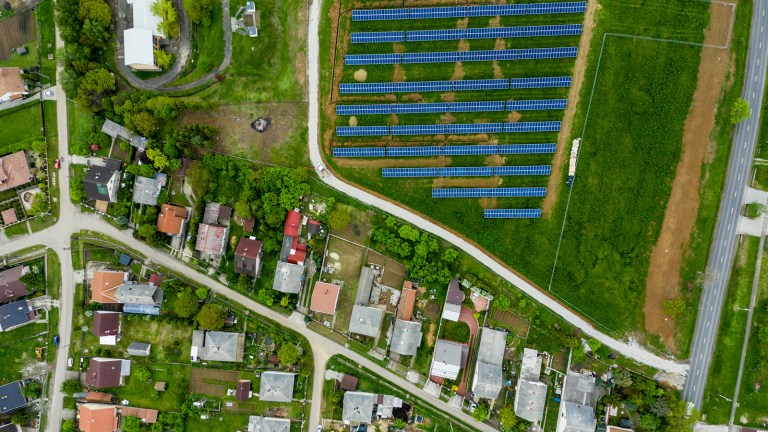How Multifamily Projects Can Utilize Community Solar

As states and jurisdictions take actions to reduce greenhouse gas emissions, many localities are considering ways to limit direct (from heating and cooling) and indirect (consumption of electricity by the building occupant) emissions from the building sector. One strategy for builders to consider is the integration or addition of solar photovoltaics (PV).
However, according to NREL, 49% of households and 48% of businesses cannot host a PV system of adequate size on their property or virtually net meter an entire system themselves. That means half the market needs another solution to take advantage of solar opportunities.
It can be particularly challenging for multifamily developers to incorporate on-site solar because of:
- Lack of eligible roof square footage for solar panels (e.g., because of roof orientation, structural load limitations, or other uses for the space such as equipment or outdoor amenities).
- Infrastructure costs for connecting panels to the building system, metering and battery storage.
- Operation and maintenance requirements.
Some projects may want to explore community solar, which is a large solar array with multiple “off-takers” — entities who are getting utility bill credits for generation from that one facility.
Off-site community solar models available to multifamily properties include:
- Subscriber to Community Solar: A master-metered building signs up for bill credits from an off-site solar system. Those credits could be applied both to the common space and tenant bills.
- Subscription Aggregator: A multi-metered building signs up for bill credits on behalf of tenants and distributes credits accordingly to those tenants.
Some low- and moderate-income (LMI) developers may be able to take advantage of financial incentives, as 13 states have an LMI component in their community solar policies and generally target 20-50% LMI serving capacity. Some utilities are also developing LMI serving programs, including Florida Power and Light and Duke Energy.
Community solar currently represents less than 5% of solar implementation, but capacity has more than doubled every year since 2010 and continues to expand. Per the Department of Energy, capacity by state — adjusted for population — is highest in Minnesota, Arkansas and Florida, followed by Colorado and New York.
Learn more about community solar in the multifamily space via two sessions from the 2021 U.S. Department of Energy Better Buildings Summit: “Unleashing the Power of Community Solar in Multifamily Buildings” and “Workshop: Balancing the Benefits of Community Solar in Multifamily Housing,” which are available for viewing on-demand at no cost. Additional case studies are also available in NAHB’s A Builder’s Toolkit for Solar at nahb.org.
To stay current on the high-performance residential building sector, with tips on water efficiency, energy efficiency, indoor air quality, and other building science strategies, follow NAHB’s Sustainability and Green Building efforts on Twitter.
